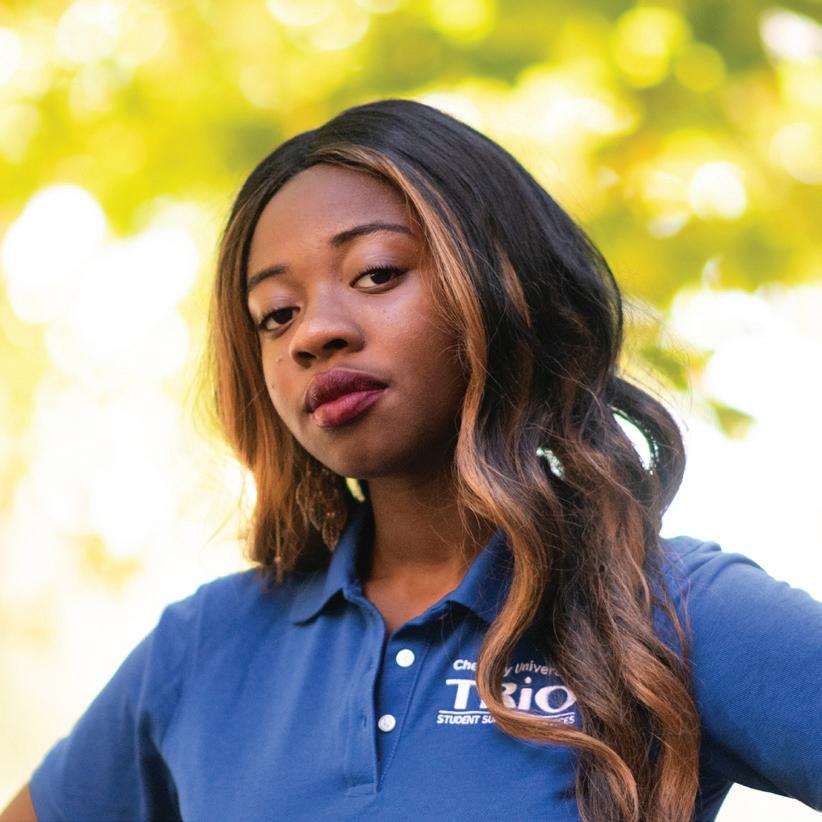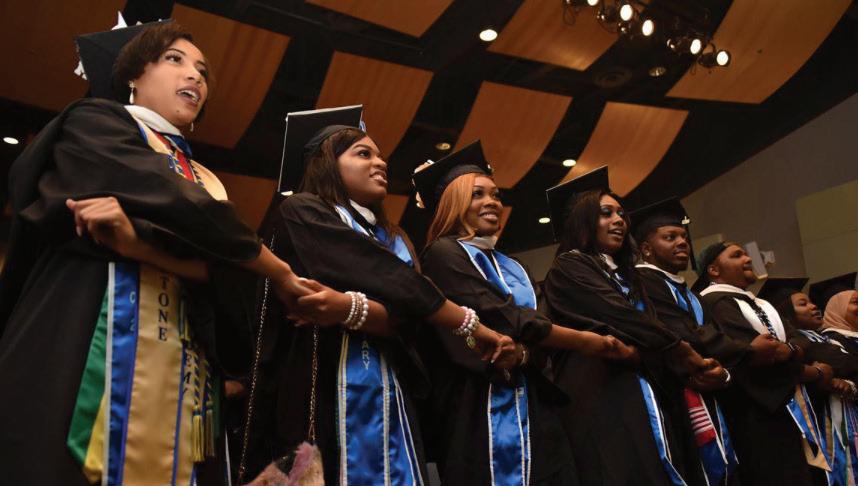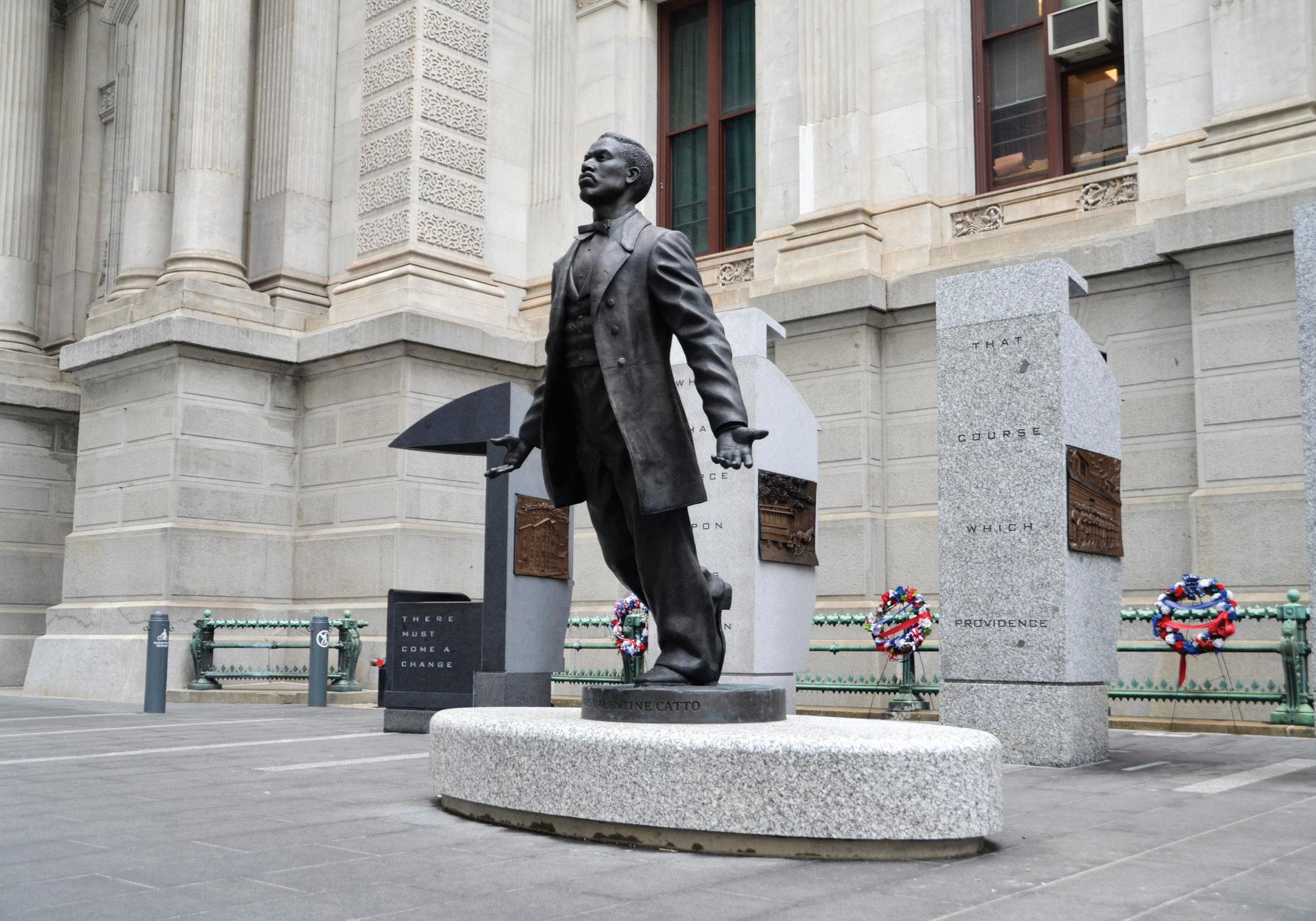 Josephine Silone Yates
Alumna, Institute for Colored Youth, ca 1877
Josephine Silone Yates
Alumna, Institute for Colored Youth, ca 1877
“The aim of all true education is to give to body and soul all the beauty, strength, and perfection of which they are capable, to fit the individual for complete living.”

Our History
Quaker elder Richard Humphreys had amassed enough wealth and lived through enough turbulent times in Nativist Period America to be moved. Humphreys amended his Will in 1829 bequeathing one-tenth of his estate toward founding a benevolent society or institution that would educate the descendants of Africans.
The year 1829 brought with it the founding of The Philadelphia Inquirer in early June, the outbreak of The Cincinnati Riot in late August, and the opening of Philadelphia’s Eastern State Penitentiary, imprisoning its first inmate in late October, a young Black farmer named Charles Williams.
A 16-year-old Baltimorean, Hezekiah Grice, wrote to Black leaders urging they convene to address how free Black people could attain justice anywhere in America. The letter led Black organizations in nine of the 24 states to send delegates to the first national Negro Convention in Philadelphia a year later.
In 1837, five years after his death, the friends Humphreys entrusted with fulfilling the hopes set forth by his bequest formed the African Institute offering students of African descent instruction in the industrial arts, reading, writing, and math. It was renamed the Institute for Colored Youth in 1852, the nation’s first HBCU. The Institute was renamed Cheyney Training School for Teachers in 1914. Its first degree offering, a Bachelor of Science in Education, came in 1930. In 1951 when the school received accreditation, it was renamed Cheyney State Teachers College. It would take on its current name in 1983 and is now situated on 275 acres of land astride Chester and Delaware Counties we call Cheyney University.
Cheyney has endured the test of time because it must. It has survived a Civil War, the Great Depression, and multiple recessions relying on a strength that comes from purpose. Creating a sanctuary for the next generation of leaders, scientists, entrepreneurs, industrialists, and educators is Cheyney’s everlasting cause.
Cheyney at a Glance
1st HBCU in the Nation 13:1 Student-to-
#1
Social
2.90 Average High School GPA 83% Pennsylvania Students 72% Pell Recipients 950 Average SAT
Faculty Ratio #1 Public HBCU for College Scholarships
in
Mobility in PA State System


Our Compelling Leader
With President Aaron A. Walton at the helm, and with the support of the Commonwealth of Pennsylvania, Cheyney is on a clear path to acceding to its full potential. A resultsdriven, highly experienced leader in corporate management, Walton is a proven innovator and a fearless champion for Cheyney University and its students.
A former Vice Chair of the Pennsylvania State System of Higher Education Board of Governors, President Walton was well familiar with Cheyney’s challenges and well-suited to prepare the University for opportunities. Cheyney’s stunning reversal directed by Walton offers hope for other universities throughout the country. His compelling vision for Cheyney is to serve as the premiere educational model for excellence in academics, character, and social responsibility.
Cheyney’s legacy, is in many ways, tied to its past. Walton is executing a plan to transform
Cheyney into an interdependent, more sustainable small college for the 21st century, preserving its legacy while securing its future. A university founded on educating people of African descent for promising careers is as relevant today as it was in 1837. With a clear understanding that Cheyney was the institution that gave Black people an education when other schools would not, Walton is establishing a university where robust academic programs and student support are prioritized.
Mathematician Charles L. Reason, The Institute for Colored Youth’s founding principal, insisted classical academics be prioritized as a tool for social mobility alongside the manual arts. Reason increased student enrollment, as well as the Institute’s assets and national profile. Walton has brought Cheyney full circle, repeating Reason’s successes line-for-line, shaping the University into a model for the future.
Our Journey
Guided by the recommendations put forth by the Cheyney Task Force, which he co-chaired, Walton established the blueprint for Cheyney’s transformation.
Facing a structural deficit, millions of dollars of debt, declining enrollment, falling graduation rates, no reserves, and no endowment, Walton quickly assembled a talented and committed senior executive team. Together, they are executing a set of bold, quick-yielding actions while developing strategies for Cheyney’s long-term sustainability. More selective student recruiting, enhanced student advising, revitalized academic programming, and rationalizing the University’s cost structure are tough and thoughtful measures that started Cheyney on a new trajectory of success.
Walton established two filters through which every decision, large or small, is made: Is this in the best interest of our students? Does it preserve and advance Cheyney University? After a thorough situational analysis, the University was rightsized using a philosophy
of “shrink-to-grow.” When the Middle States Commission on Higher Education required Cheyney to “show cause” as to why its accreditation should not be withdrawn, the Administration made a compelling case based on the University’s demonstrated progress under Walton’s leadership. Middle States’ decision to reaffirm the University’s accreditation in 2019 was based on Cheyney’s ability to hit significant milestones, propelling the University into the future.
By establishing innovative public-private partnerships, recording back-to-back annual budget surpluses for the first time in almost a decade, and showing year-over-year increases in student enrollment when many universities are experiencing enrollment declines, the University’s turnaround efforts are attracting attention. The Administration also has strengthened ties with the Cheyney University National Alumni Association and the Cheyney Foundation in full support of Cheyney’s mission. Cheyney University is the next premier postsecondary destination to learn, live and work.
Transforming Cheyney University
“Shrink to Grow”
Established Two Filters
(June 2017)
Performed Assessment
(June 2017 - July 2017)
Rightsized the Institution
(August 2017 - May 2018)
Investing for Growth
(September 2017 - Present)
#1 - Is this in the best interest of our students?
#2 - Does it preserve/ advance the University?
Academics Financials
People Processes Services
Infrastructure Culture
Expenditure base
Student enrollment
Academic offerings
Organizational structure
Faculty and staff
Campus footprint
Athletic programs
New vision and strategy
Culture transformation
New recruiting model
Talent upgrades
Student success practices
Public-private partnerships
Process streamlining

Our Transformation
Then
8.8% avg. annual decline (Fall 10 - Fall 18)
Now
12.6% avg. annual increase (Fall 18 - Fall 22)
New Freshmen avg. (2013 - 17)
850 SAT
950 SAT1
New Freshmen avg. (2018 - 22)
51% avg. retention (Fall 14 - 18)
63% avg. retention (Fall 19 - 22)
Fall 19 (70%) - Highest retention in over two decades
$4.4M average annual deficits (FY12 - FY17)
$2.7M ann’l surpluses (FY19 & FY22)2
First surplus since FY 11 1
2Excluding extraordinary adjustments
2.62 HS GPA
Enrollment
Academic Profile
Outcomes Financials
2.91 HS GPA
SAT Optional beginning Fall 2020
due to the pandemic
Our Three Strategic Priorities
Student Success Financial Strength Standard of Excellence
Attract more academically prepared students
Establish an innovative student support model
Form partnerships to provide enhanced learning opportunities (e.g., internships and research)
Streamline processes to be student-centric
Leverage technology to support our retention efforts
Establish a new business model for the University
Monetize campus assets to generate non-traditional sources of income
Partner with the Cheyney Foundation to lead our fundraising efforts
Align the cost structure with revenues
Optimize the use of grants to fund critical initiatives
Transform Cheyney’s culture to be aligned with our vision, mission, & values
Upgrade talent at every level of the organization
Institute performance management practices
Provide training and development for employees
Rebrand the University
“All that he asks is that there shall be no unmanly quibbles about entrusting to him any position of honor or profit for which his attainments may fit him. And that which is committed to him as a man, he will perform as no other than a man could perform.”
Octavius V. Catto
Alumnus, Institute for Colored Youth, 1858
Student Success
First-Year Experience

Academic Success Center
Professional and Peer Tutors
Academic Advising with Faculty
In Class On Campus
Living-Learning Communities
Intrusive Advising
Health & Wellness Programs
Workshops & Speakers
In Life
Full-Time Success Coaches
Professional Development
Internship Opportunities
Numerous Career Pathways


Financial Strength
Cheyney’s strong vision, innovative strategy for growth, and improved financial stewardship have grounded the University on proper footing.

By significantly reducing annual expenditures, Cheyney ended its two most recent fiscal years with balanced budgets and annual surpluses. Pennsylvania Governor Tom Wolf committed to eliminating Cheyney’s debt owed to the Pennsylvania System of Higher Education. With the support from the Commonwealth and the loan elimination plan, Cheyney eliminated a substantial portion of its debt load.
Passing the performance plateau requires shaking-off losing practices that have immersed the institution. Cheyney has moved onward toward stability. A new business model positions Cheyney as a responsible steward for funds from the State, students, and donors. Monetizing campus assets generates nontraditional sources of income to leverage other revenue.









 text
Cheyney
Epcot Crenshaw
Navrogen ASI Chemicals
Sure BioChem
Sonali Solar
Cheyney
Cheyney
Advanced Alchemy
Herban Farms
Hemp
Agribusiness
Analytical Services
Life Sciences
Biotech Hub
Solar Panel Manufacturing
American Additive
3D Printing
Event Venue
Regional Sports Complex
text
Cheyney
Epcot Crenshaw
Navrogen ASI Chemicals
Sure BioChem
Sonali Solar
Cheyney
Cheyney
Advanced Alchemy
Herban Farms
Hemp
Agribusiness
Analytical Services
Life Sciences
Biotech Hub
Solar Panel Manufacturing
American Additive
3D Printing
Event Venue
Regional Sports Complex
Campus Monetization
Land is a strategic tool for economic growth. Cheyney’s campus is situated on 275 acres in one of the most desirable areas in the Commonwealth of Pennsylvania. Close to 400,000 square feet of building space stood unoccupied or underutilized.
Mosaic Development Partners and the Chester County Economic Development Council have been working with Cheyney to assess real estate, chart needs, and pursue opportunities. Cheyney leverages its real estate to attract life science, technology, agribusiness, energy, healthcare, and light manufacturing companies to lease space on campus. Cheyney’s innovative model provides students with hands-on experience, enhances the campus’ role in the region’s economic future, and generates additional revenue, thereby elevating the University into a position of financial strength.
Cheyney is home to a Keystone Innovation Zone (KIZ), an added benefit for early-stage companies. KIZ is a Pennsylvania state program that offers tax credits to companies that locate to one of its designated zones. Herban Farms (agribusiness), Navrogen (cancer research),
SureBiochem (laboratory testing), ASI Chemicals, Inc. (pharmaceuticals), Epcot Crenshaw (analytical services), Advanced Alchemy Labs (hemp farming and processing), Sonali Solar (solar panel manufacturing) and American Additive Manufacturing (large-scale 3D printing) are among the companies that have partnered with Cheyney.
These partnerships support the University’s recently launched Institute for the Contemporary African American Experience, created to be a hub for cutting-edge applied research.


Standard of Excellence
Is it in the best interest of our students?
Does it preserve and advance the University?
Restoring Cheyney to its rightful position among elite HBCUs meant transforming its culture to align with its vision, mission, and values. The two questions posed by Walton as decision making filters for transforming Cheyney remain guiding principles beyond the University’s transitional period. These questions ensure standards of excellence are bred through every kernel of the institution.

To produce graduates who excel in academics, are of the best character, and are socially responsible, Walton upgraded talent at every level of the organization. An executive leadership team representing a broad range of disciplines, all working in accord, manage the University. Staff and faculty receive consistent quality training. Performance management practices ensure there is a Cheyney today and a Cheyney forever.

Statue of Octavius V. Catto, 1858 Alumnus
First public monument in Philadelphia to honor a specific African American

We Need Cheyney University
Brown v. Board of Education integrated schools, but America still needs the nation’s first HBCU to fill the astounding gap that remains. Title III of the Higher Education Act of 1965 officially defined Historically Black Colleges and Universities, or HBCUs, as schools established and accredited before 1964 with the principle mission being the education of Black Americans. The designation was designed to strengthen resources, but the inequality deeply rooted in America’s educational systems has endured.
America’s HBCUs make up only two percent of all colleges and universities in the United States. Remarkably, The Network Journal recently found that these institutions produce 40 percent of Black members of Congress, 40 percent o f the nation’s Black engineers,
50 percent of America’s Black lawyers, and 80 percent of its Black judges. HBCUs enroll more low-income and firstgeneration students than do the nonprofit, predominately white institutions.
Black student enrollment at “very high research activity” institutions as classified by Carnegie Commission on Higher Education h as shrunk significantly over the l ast two decades while Black enrollment at institutions that grant mainly associate degrees has nearly doubled. These statistics echo a long period in America’s history when the only quality education available to young Black people was at a school designed and designated for them, where they could be included, respected, and encouraged.
“I realize that the road I have traveled all of these years since I left Cheyney was possible, in part, because of what I learned here.”
Ed Bradley
Alumnus, Cheyney State College, 1964

cheyney.edu
 Josephine Silone Yates
Alumna, Institute for Colored Youth, ca 1877
Josephine Silone Yates
Alumna, Institute for Colored Youth, ca 1877


















 text
Cheyney
Epcot Crenshaw
Navrogen ASI Chemicals
Sure BioChem
Sonali Solar
Cheyney
Cheyney
Advanced Alchemy
Herban Farms
Hemp
Agribusiness
Analytical Services
Life Sciences
Biotech Hub
Solar Panel Manufacturing
American Additive
3D Printing
Event Venue
Regional Sports Complex
text
Cheyney
Epcot Crenshaw
Navrogen ASI Chemicals
Sure BioChem
Sonali Solar
Cheyney
Cheyney
Advanced Alchemy
Herban Farms
Hemp
Agribusiness
Analytical Services
Life Sciences
Biotech Hub
Solar Panel Manufacturing
American Additive
3D Printing
Event Venue
Regional Sports Complex





